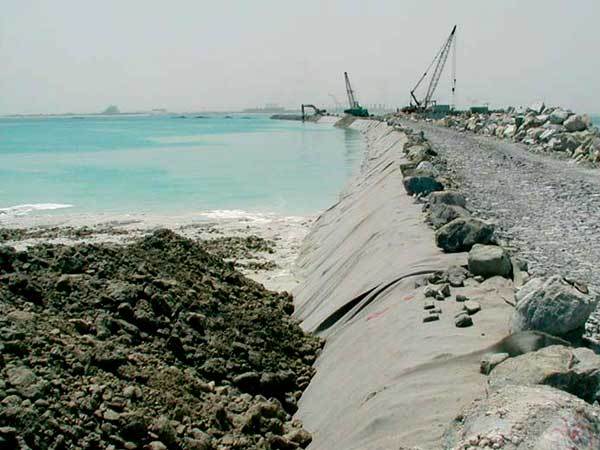How to Avoid the Folding of Geotextile in Construction
Release time:
2024-07-03
In the construction process, to avoid the geotextile folds is an important link to ensure the quality of the project and the performance of the geotextile. The following are some specific measures and suggestions, summarized in a clear way:
Preparation before 1. construction
Site preparation:
Clean up the construction site to ensure that the site is flat and free of sharp objects and debris, and avoid geotextile folds due to uneven ground or foreign matter during the laying process.
Fill and trim the uneven ground to ensure that the foundation surface is dry, flat and smooth.
Material inspection:
Check the quality of the geotextile to ensure that it meets the design requirements and is free of defects such as damage and wrinkles.
Prepare enough geotextiles and auxiliary materials, such as adhesives, stitching, etc., as well as equipment and tools required for construction.
Second, the laying process of attention
Laying direction:
According to the engineering requirements and the actual situation of the site to determine the geotextile laying direction, generally should be perpendicular to the flow direction or the main force direction.
Ensure that the geotextile is delivered in the same direction and cannot be turned over or changed at will.
Keep it flat:
During the laying process, use special tools or equipment to assist in unrolling the geotextile to ensure that it is flat and wrinkle-free.
Laying should be done slowly to avoid rapid pulling or bending of the geotextile to avoid creasing.
Allowance:
When laying geotextile, the deformation allowance should be properly reserved to deal with the deformation and displacement in the subsequent construction process.
Especially in corners, edges and other parts prone to wrinkles, special attention should be paid to leave a margin and properly handle.
Seam Treatment:
Seam treatment is one of the key links to avoid wrinkles. The joints shall be smooth, wrinkle-free and fixed by suitable seaming techniques (e. g. hot melt seams, sewn seams, etc.).
The width of the joint shall not be less than the specified value (e. g. 100mm) to ensure the firmness and tightness of the joint.
III. Post-construction inspection and maintenance
Comprehensive inspection:
After the completion of the construction, a comprehensive inspection of the geotextile to ensure that there are no wrinkles, damage and other defects.
Special attention should be paid to check the corners, edges and other parts that are prone to wrinkles, and whether the joints are smooth and firm.
Maintenance:
In the use of the process, should be regularly on the geotextile maintenance, such as cleaning debris, repair damage and so on.
Strengthen the monitoring and inspection of geotextiles, and timely discover and deal with potential problems, such as folds and displacements.
4. Other Considerations
Construction personnel training:
Provide professional training for construction personnel to understand the performance, construction methods and precautions of geotextiles.
Emphasize the importance of avoiding folds during construction and teach how to properly lay and fix geotextiles.
Environmental Control:
When working in windy weather, measures should be taken (such as using large stones or sandbags to press the geotextile) to prevent the influence of wind on the geotextile.
Avoid working in wet or rainy weather to reduce the risk of moisture or damage to the geotextile.
Through the implementation of the above measures, we can effectively avoid the problem of geotextile folds in the construction process, and ensure the full play of engineering quality and geotextile performance.





